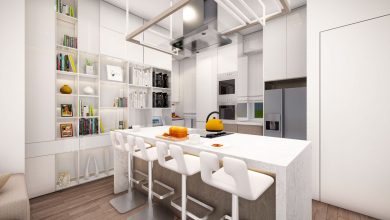Let’s start discovering the wonderful neighborhoods of Rome, one of the most beautiful and largest cities in the world. We continue our journey in the Italian capital, revealing seven more neighborhoods of Rome that deserve our attention, as well as the attention of any tourist heading to the city.
Table of Contents
Neighborhoods of Rome: Here are the Last Seven
Ostiense

Lively, colorful and eclectic, the Ostiense neighborhood is bordered by the popular areas of Garbatella and Testaccio. It is one of Rome’s best neighborhoods in terms of street art, with the best works to be found along Via del Porto Fluviale, Via dei Magazzini Generali and under the railway bridge between Via della Stazione Ostiense and Via Pellegrino Matteucci.
Garbatella

The neighborhood was created to house working-class families in the 1920s and was inspired by Ebenezer Howard’s ‘British Garden City’, a utopian ideal where residents lived in harmony with nature. Today, small groups of independent condominiums (lots) are clustered around common internal courtyards, creating cultivable green spaces.
Legend has it that the name Garbatella derives from a kindly innkeeper known as Carlotta who fed construction workers, leading to the shortening of “Garbata Ostella” to simply Garbatella.
Aventino

Located on the hill of the same name, the Aventine is one of the most elegant residential neighborhoods of Rome, and given its proximity to the center, also one of the most coveted. A quiet and private area with beautiful Art Nouveau villas, far from the hustle and bustle of the city center.
To visit the fascinating Orange Garden (Giardino degli Aranci) with the nearby Santa Sabina, one of the best preserved early Christian churches; Piazza dei Cavalieri di Malta where the city’s most famous keyhole is located and, of course, the Circus Maximus.
EUR

The EUR district is a fascinating area that is completely different from the others. Famous for its architecture inspired by fascist ideology, it was built on the occasion of the 1942 Universal Exhibition, from which it takes its name.
The symbolic element is the Square Colosseum or Palazzo della Civiltà Italiana, today the headquarters of Fendi, along with the Palazzo dei Congressi, the church of Santi Paolo e Pietro and more recently the Nuvola di Fuksas, seat of the Italian Congress Center.
Ponte Milvio

It is one of the favorite areas for young people to go out with friends, have a drink and enjoy the weekend. The nightlife here has a lot to offer, with a wide variety of restaurants and bars. The classical Roman atmosphere and the view of one of Rome’s oldest bridges are enough to justify a walk north from the city center.
Flaminio

The Flaminio neighborhood among Rome’s neighborhoods is young and modern, with numerous attractions: from the beautiful MAXXI, a contemporary art museum designed by Zaha Hadid, to the Auditorium Parco della Musica by Renzo Piano, where you can attend countless shows, concerts and events, to the recent Ponte della Musica, which connects the Flaminio with the Foro Italico. Also worth a visit is “Little London”, a street with a “British” style reminiscent of London’s residential neighborhoods.
Coppedè, a dream place in Rome

The Coppedè neighborhood is not exactly one of the most famous neighborhoods in Rome, but it is named after the architect who designed it and from whom it takes its name: Gino Coppedè. It is actually located in the Trieste district between Salaria and Nomentana. This complex of buildings represents a fantastic mix of styles, including Liberty, Art Decò, Greek, Gothic, Baroque and Medieval.
We hope you enjoyed the second part of the tour through the districts of the eternal city. Don’t miss the first part here!






